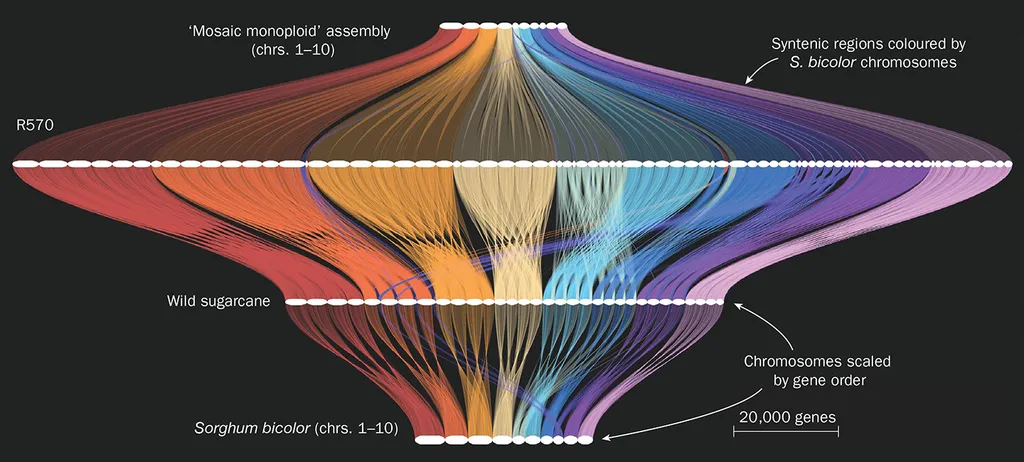In the heart of China’s Zhejiang province, researchers are unlocking the genetic secrets of sugarcane, a crop vital to the global energy sector. A recent study led by Wei Cheng from the Key Laboratory of Horticultural Plant Growth, Development and Quality Improvement at Zhejiang University has made significant strides in understanding resistance to sugarcane brown stripe (SBS), a disease that has long plagued farmers and threatened sugar yields.
Sugarcane brown stripe, caused by the fungus *Helminthosporium stenospilum*, is a major concern for the industry. It doesn’t just reduce the quantity of harvestable cane; it also diminishes sugar content, a critical factor for both food and energy production. “This disease is a significant challenge for sugarcane growers worldwide,” Cheng explains. “Our goal was to identify the genetic basis of resistance to SBS, which could pave the way for more resilient sugarcane varieties.”
The study, published in the open-access journal Horticulturae (which translates to “Gardening” in English), employed advanced genetic mapping techniques to construct high-density linkage maps for two sugarcane cultivars: YT93-159, which is resistant to SBS, and ROC22, which is susceptible. These maps, created using single-dose markers from the Axiom Sugarcane100K SNP chip, provided a detailed genetic blueprint of the plants.
Through quantitative trait locus (QTL) mapping, the researchers identified 32 QTL associated with SBS resistance. These QTL explained between 3.73% and 11.64% of the phenotypic variation, with the total phenotypic variance explained (PVE) in YT93-159 and ROC22 being 107.44% and 79.09%, respectively. Notably, four QTL were repeatedly detected, indicating their stability across different environments. Two major QTL, *qSBS-Y38* and *qSBS-R46*, stood out, each accounting for over 11% of the PVE.
The research didn’t stop at identifying QTL. Cheng and his team delved deeper, screening 25 disease resistance candidate genes within the stable QTL regions. Among these, two genes, *Soffic.01G0010840-3C* (*PR3*) and *Soffic.09G0017520-1P* (*DND2*), were significantly up-regulated in the resistant cultivar YT93-159. In contrast, the gene *Soffic.01G0040620-1P* (*EDR2*) was up-regulated in the susceptible ROC22.
The implications of this research are substantial for the energy sector, which relies heavily on sugarcane for biofuel production. “Understanding the genetic basis of disease resistance is crucial for developing new sugarcane varieties that can withstand the pressures of SBS,” Cheng says. “This could lead to more stable yields and higher sugar content, ultimately benefiting the entire bioenergy supply chain.”
The findings provide a valuable roadmap for future sugarcane breeding programs aimed at combating SBS. By identifying specific genes and QTL associated with resistance, breeders can more efficiently develop new varieties that are not only high-yielding but also resilient to disease. This could translate to more reliable sugar supplies for both food and energy production, ensuring a more stable and sustainable future for the industry.
As the world continues to seek sustainable energy solutions, the role of sugarcane as a biofuel source becomes increasingly important. Research like Cheng’s is at the forefront of this effort, driving innovation and progress in the field. With each genetic discovery, we move closer to a future where sugarcane can meet the world’s energy needs without being hampered by disease.

